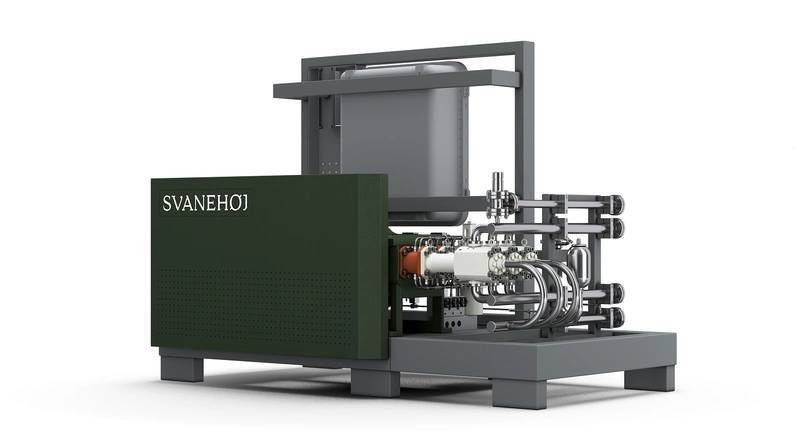Svanehøj Unveils High-pressure Marine Pump Unit for LNG Fuel
Denmark-based marine pump specialist Svanehøj said Wednesday it can now offer a high-pressure pump solution for two-stroke engines as demand for LNG-fueled vessels remains high.
The company describes its solution as a compact unit with three combined cold ends designed for optimal flow and longer service intervals.

High-pressure LNG engines offer lower fuel consumption and significantly reduced methane slips. This is driving a surge in demand for crucial components for LNG high-pressure fuel supply systems, which Svanehøj is now ready to meet, the company said.
The Danish marine pump specialist has developed a high-pressure fuel pump unit with a drive system and three combined cold ends designed for optimal flow and longer service intervals. The new solution, called “HPP Triplex Unit”, is pre-launched at Kormarine in Busan, Korea, this week.
"It is evident that more integrators of fuel gas supply systems are taking on a progressively substantial role in designing fuel supply systems, especially for LNG-powered vessels. Therefore, they increasingly require critical components specially designed to operate under extremely low temperatures and high pressures. Based on decades of experience in low-pressure fuel and cargo pumps for LNG, we made a strategic decision to extend our scope and include a larger part of the LNG fuel supply system by developing a high-pressure pump unit, exclusively designed for maritime purposes, says Johnny Houmann, CSO in Svanehøj.
Svanehøj said it had designed the HPP Triplex Unit to meet the maritime industry's demands for leak-free critical components with a long service life.
"The cold end includes an innovative low-pressure sealing arrangement that reduces friction, ensuring longer service intervals. To further reduce maintenance costs, Svanehøj has developed a cartridge solution for swift sealing replacement. To ensure high efficiency and low-pressure drop, Svanehøj has also incorporated a new inlet valve design," the company said.

"In the ideal scenario, all ships would operate on carbon-free fuels tomorrow. However, it will take several years to establish an infrastructure to meet the need for liquid renewable energy. Transition fuels are essential for a successful energy transition, and natural gas is by far the best option – with significant environmental benefits. In Svanehøj, we are committed to continuously innovating our product portfolio designs and service models at the lowest possible environmental lifecycle cost," says Søren Kringelholt Nielsen, CEO at Svanehøj.
According to the company, the uptake of LNG has been high in recent years, especially among new buildings.
According to the DNV database for alternative fuels, there are now 431 LNG-powered ships in operation and another 539 ships on order, bringing the total count close to 1,000 vessels. In 2021 and 2022 alone, 462 LNG-fueled ships were ordered, and in the first nine months of 2023, a further 104 ships were added to the global order book.
HPP Triplex Unit – technical info
A triplex type high pressure piston pump for LNG, with belt drive system, installed on a skid for easy transportation and installation.
•3 pcs. of cold ends
•ATEX motor downrated for VFD operation
•Media: LNG
•Capacity: 11,5 - 72.0 l/min (0.7-4.3 m3/h)
•Inlet pressure: 7-14 bar
•Operational design pressure: 350 bar
•Maximum working pressure: 380 bar
•Minimum operation temperature: -163°C
•Unit dimensions: 3000x1390x1100 mm
